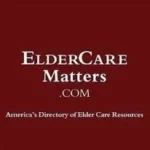
Knowing the truth about the following misconceptions about nursing homes and your assets could be highly beneficial to your family’s elder care situation…
Misconception No. 1: “If I Put My Assets In Joint Names With My Children, The Assets Will Be Exempt For Nursing Home Purposes.”
The Truth: You are considered the owner of any assets that you put in joint names with anyone, even assets that were put in joint names decades ago. Certain creations of joint assets may result in divestment’s, disqualifying you from receiving Medicaid benefits for a period of time.
Misconception No. 2: “If I Don’t Transfer Assets Five Years Before Entering A Nursing Home, I Can’t Do It At All.”
Not true. The five-year rule is a look-back rule. It has nothing to do with when a person enters a nursing home. It has to do with when a person applies for Medicaid. There is a question on the Medicaid application that reads, “Have you transferred any assets to an individual in the last five years?” If a transfer has taken place during that period of time, there will be a period of time the Medicaid applicant is not eligible for Medicaid. The penalty period can be longer or shorter than five years.
Misconception No. 3: “I Can’t Transfer Assets After I Am Already In A Nursing Home.”
Again, the same rule applies. Neither the look-back nor the penalty period has anything to do with when a person enters a nursing home. Under the look back rule, all transfers and financial information must be disclosed to the Medicaid agency five years prior to the date of the Medicaid application. The penalty period is a completely different rule. The penalty period is calculated by dividing the amount of the transfer by the State Divisor Rate. For 2016, the State Divisor Rate in Colorado is $7,563.00. There are complicated rules on when the penalty period begins.
Misconception No. 4: “You May Not Apply For Medicaid Within Five Years Of Making A Gift.”
As indicated above, the five year look-back has nothing to do with the penalty. A penalty is calculated by dividing the value of the assets gifted by the State Medicaid Divisor. This calculation results in a number of months for which a person making a transfer is ineligible for Medicaid. The penalty period does not apply to transfers between spouses.
Misconception No. 5: “I Can Give Away $14,000 (Previously $10,000) Per Person Per Year Without Any Penalty.”
The Truth: This is a Federal gift tax limitation. It has nothing to do with Medicaid eligibility. Medicaid gifting rules are completely different. All gifts that are divestments, no matter what amount, will create a penalty.
Misconception No. 6: “If My Spouse Or I Go Into A Nursing Home, The State Will Take My Assets Away.”
The Truth: The State takes nothing. Medicaid simply will not pay anything until you “spend down” all of your available or “countable” assets. If you are single or your spouse is also in a nursing home, you would have to spend down to $2,000 or less in cash or other countable assets. If your spouse lives at home, he or she can also keep at least $23,844 in 2015 or if greater, one-half of the countable assets up to $119,220, and also an income allowance of at least $1,966 per month.
One way to qualify for Medicaid is to convert countable assets into certain exempt assets or income. Also, after your death, a properly titled asset would also avoid probate and not be an available asset under the State’s Medicaid estate recovery program to pay back the State for Medicaid benefits paid.
Misconception No. 7: “If My Spouse Or I Go Into A Nursing Home, I Will Lose My Home.”
The Truth: During your lifetime, your home is an exempt asset if it is owned correctly. It can stay an exempt asset during your entire nursing home stay. The home must be used and titled properly. A home that is not titled or used properly is not exempt and is available for nursing home expenses. There are other exempt assets in addition to the home and include one automobile, certain pre-paid funeral arrangements and certain life insurance policies. After your death, a properly-titled home would also avoid probate and not be an available asset under the State’s Medicaid estate recovery program to pay back the State for Medicaid benefits paid.
Misconception No. 8: “I have protected my assets by purchasing a ‘Medicaid friendly’ annuity.”
The Truth: Annuities were once popular and effective Medicaid pre-planning tools. However, changes in both Federal and State Medicaid laws have dramatically limited their usefulness in pre-planning and qualifying for Medicaid. Most annuities that are currently marketed as Medicaid friendly annuities are just regular deferred annuities, which are convertible when needed into monthly Medicaid qualifying payments over your lifetime. Since the payments are considered income, they are not considered countable assets but an income stream for Medicaid purposes.
The drawback with these Medicaid-friendly annuities is that they give you few options when qualifying for Medicaid. After Medicaid qualification, these annuities require that the income be used to pay the nursing home and the death benefit used to pay back the State for nursing home expenses. Also you may have to cash them in, resulting in substantial surrender charge penalties, which I have seen as high as 50 percent. These annuities typically limit your options and significantly limit the amount of your assets that can be protected if you or your spouse enter a nursing home. However, certain Medicaid-compliant annuities purchased after a nursing home stay begins and as part of a comprehensive asset protection plan can be effective planning tools.
Misconception No. 9: “There Is A Small Chance That I Will End Up In A Nursing Home Anyway.”
The Truth: According to studies reported in the New England Journal of Medicine, 43 percent of 65-year-old persons will spend time in a nursing home at some point during their lifetimes. Of those entering a nursing home, 55 percent will spend more than one year in the nursing home and 21 percent will stay more than five years. So if you are a senior, you have about an one-in-four chance of spending one year or more in a nursing home.
Misconception No. 10: “If Medicaid Will Cover My Nursing Home Expenses, I Do Not Need Long-term Care Insurance.”
The Truth: Many people benefit from long-term care insurance. Most of the time, Medicaid only covers long-term care expenses in certain nursing homes. Most recent long-term care insurance policies are much more flexible and will pay for assistance expenses while you are in your home, an adult foster care home, an assisted living facility or a nursing home.
Misconception No. 11: “If I Am Already In A Nursing Home, It Is Too Late To Protect My Assets.”
The Truth: You can protect assets no matter how long you have been in a nursing home. We have assisted clients to protect assets and qualify for Medicaid even after years of private paying the nursing home expenses. If you or your spouse are in a nursing home and the other lives at home, usually you can protect almost all of your assets for the stay-at-home spouse. If you are not married and in a nursing home, or both you and your spouse are in a nursing home, in many cases you can still protect a substantial portion of your assets.
Medicaid and asset protection planning is not for do-it-yourselfers. Often this results Medicaid ineligibility for many months and additional costs and expenses. Do not attempt to do this on your own. Consult with a knowledgeable elder law specialist, who can advise you properly.
Misconception No. 12: “I Was Told My Only Choice Was To Spend Down.”
In the case of a married couple, it is almost always unnecessary to spend down. If spending down is the only advice you are receiving, then you are talking to the wrong person.
Misconception No. 13: “I Don’t Need To Disclose Assets To Medicaid If I Am Not Reporting Income From Those Assets On My Income Tax Return.”
Failure to disclose assets to Medicaid such as annuities or EE bonds that do not produce current income is a crime subject to a term of imprisonment. ALWAYS DISCLOSE everything to Medicaid.
This article is provided by Dennis J. Toman, CELA, founder of The ElderLaw Firm in Greensboro, North Carolina – one of North Carolina’s TOP Elder Law and Estate Planning Law Firms. Attorney Toman and his firm are Members of the National ElderCare Matters Alliance and have a Featured Listing on ElderCareMatters.com – America’s National Directory of Elder Care / Senior Care Resources for Families.
- If you have additional questions about your family’s Elder Care / Senior Care Matters, you can count on ElderCareMatters.com (America’s National Directory of Elder Care / Senior Care Resources) to help you find America’s Top Elder Care / Senior Care Professionals. You can find Local Elder Care / Senior Care Experts by Searching our National Database by City and Service Category. (This Search feature is located on the homepage of ElderCareMatters.com). The Elder Care / Senior Care Experts who are found on ElderCareMatters.com can provide you with the help you need in a wide range of Elder Care / Senior Care Services, including Elder Law, Estate Planning, Home Care, Assisted Living, Care Management, Daily Money Management, Senior Living, Investment Advisory Services, Tax & Accounting Services, Wills & Trusts, Probate plus many other Elder Care Services.We look forward to helping you plan for and deal with your family’s Issues of Aging.
Visit ElderCareMatters.com.


